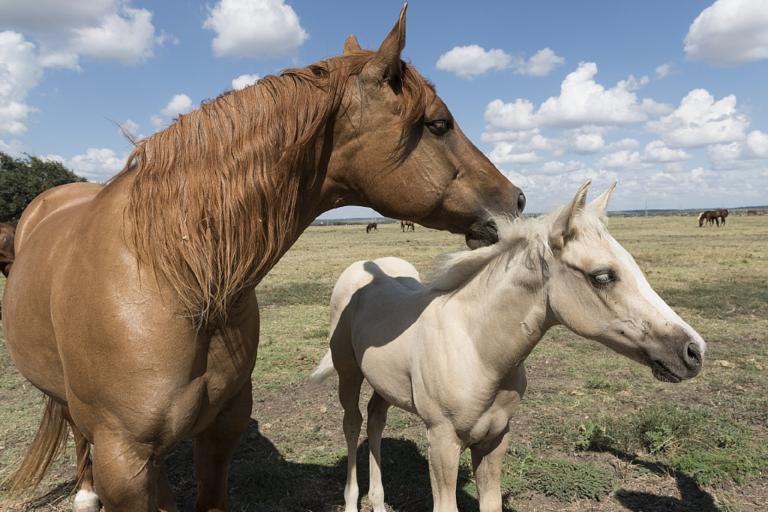Incontinentia Pigmenti (IP Horse)
→ Coat pattern with negative effects on skin, coat, teeth and eyes
Symptoms
- Pattern following the lines of Blaschko (going down from the spine on each side of the horse)
- Anomalies of eyes, teeth and hooves
- Hairless patches distributed over entire body
- Itchy skin lesions
General Information
- IP may be mistaken for a “normal” pattern.
- Mares show sparse mane and tail.
- Symptoms manifest themselves over time.
- Stallions with this variant will be aborted during pregnancy.
Test Information
This test detects the change of a single basepair in the IKBKG gene.
Genotype and Lab Report
Inheritance: X-linked dominant
→ The variant affects the X chromosome. Females have two copies of the X chromosome, therefore when one of the two is mutated, the effects are not extreme. Males have only one X chromosome, so having one mutated variant causes severe symptoms. Male foals do not develop to term.
Genotype
X/X = normal mare
The mare has no copies of the genetic variant causitive for IP and therefore cannot pass it on to her offspring.
XIP/X = affected mare (heterozygous)
The genetic variant will be passed on to offspring with a probability of 50%. These foals will also be carriers or affected.
X/Y = normal stallion
The stallion has no copies of the genetic variant causitive for IP and therefore cannot pass it on to his offspring.
XIP/Y = affected stallion (homozygous)
The foal is affected and will be aborted during pregnancy.
Recommendations
To reduce distribution of IP, affected mares (XIP/X) should not be used for breeding.
Literature
Towers, R.E., Murgiano, L., Millar, D.S., Glen, E., Topf, A., Jagannathan, V., Drögemüller, C., Goodship, J.A., Clarke, A.J., Leeb, T.: A nonsense mutation in the IKBKG gene in mares with incontinentia pigmenti. PLoS One 8:e81625, 2013. Pubmed reference: 24324710. DOI: 10.1371/journal.pone.0081625.
Further information is available at Online Mendelian Inheritance in Animals.

